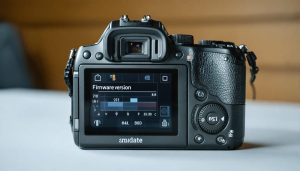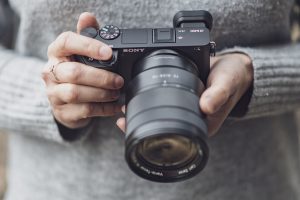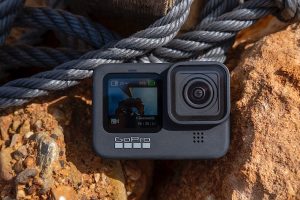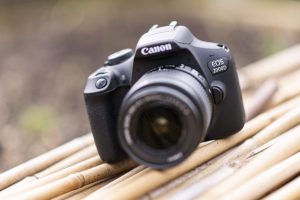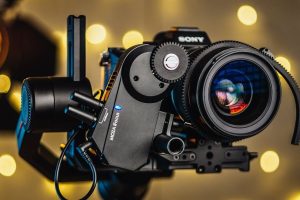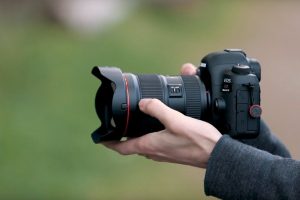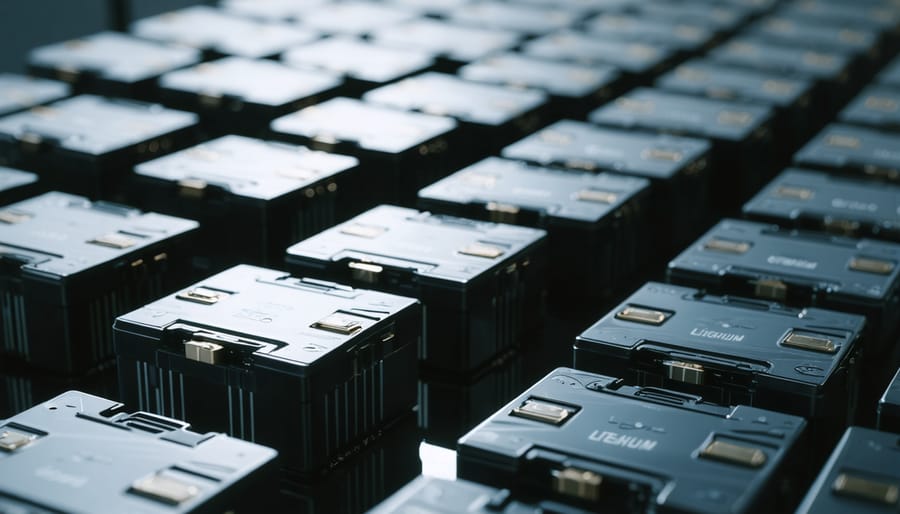
Extend your camcorder’s recording time to 12+ hours by combining high-capacity lithium-ion batteries with essential battery life optimization techniques. Professional videographers consistently achieve marathon shooting sessions by employing dual-battery systems, power banks, and strategic power management. Modern camcorders equipped with efficient power circuits and advanced battery technology revolutionize extended filming, eliminating the frustration of unexpected shutdowns during crucial moments. Whether documenting weddings, capturing wildlife, or recording long-form interviews, mastering power management transforms your camcorder from a time-limited device into a reliable workhorse capable of handling demanding professional assignments. This comprehensive guide explores cutting-edge battery solutions, proven power-saving methods, and professional techniques that guarantee uninterrupted recording for your most challenging projects.
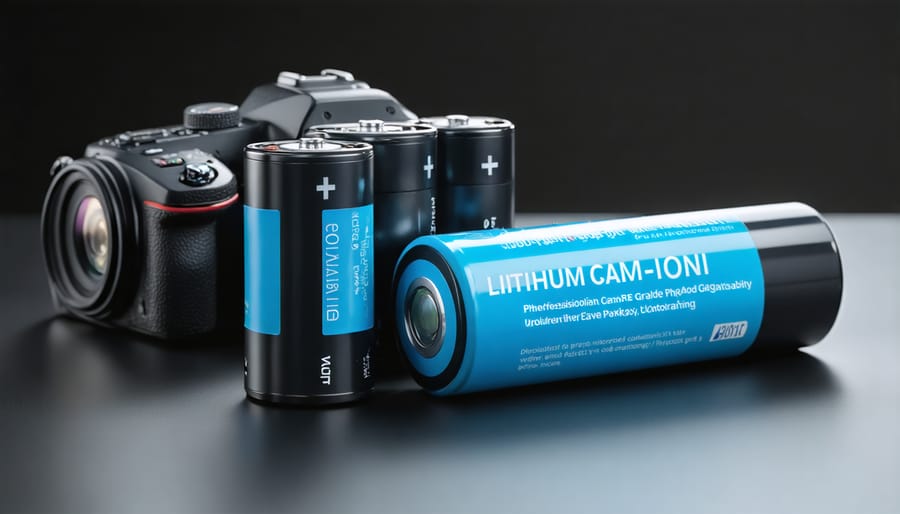
Understanding Camcorder Battery Types
Lithium-Ion vs. Other Battery Technologies
When it comes to modern camcorder technology, lithium-ion batteries have become the gold standard, and for good reason. Compared to their predecessors, like NiMH (Nickel-Metal Hydride) and NiCd (Nickel-Cadmium) batteries, Li-ion offers several distinct advantages for videographers.
First, lithium-ion batteries maintain a more consistent voltage throughout their discharge cycle, ensuring stable camera performance until the battery is nearly depleted. They also boast a higher energy density, meaning they can pack more power into a smaller, lighter package – essential for long shooting sessions where every ounce matters.
Unlike NiCd batteries that suffer from the notorious “memory effect,” Li-ion batteries can be charged at any time without degrading their capacity. They also have a significantly lower self-discharge rate, typically losing only 5% of their charge per month when not in use, compared to 20% for NiMH batteries.
However, it’s worth noting that alkaline batteries still have their place as emergency backups due to their long shelf life and availability. Some photographers also prefer the predictable discharge curve of NiMH batteries for certain specialized applications, though they’re heavier and require more frequent charging.
For most users, the benefits of lithium-ion – longer runtime, lighter weight, and better overall performance – make them the clear choice for extended recording sessions.
Capacity Ratings Explained
When shopping for a camcorder battery, you’ll often encounter the term “mAh” (milliamp hours), which indicates the battery’s capacity. Think of mAh as your camcorder’s fuel tank size – the higher the number, the longer your device can typically run. For example, a 2000mAh battery holds twice the charge of a 1000mAh battery.
However, actual recording time isn’t quite as simple as comparing mAh numbers. Your camcorder’s power consumption, recording settings, and usage patterns all affect battery life. As a general rule of thumb, a 2000mAh battery might provide 2-3 hours of continuous recording at standard settings, while a 4000mAh battery could last 4-6 hours.
To estimate your recording time, divide your battery’s mAh rating by your camcorder’s power consumption rate (usually found in the manual). For instance, if your camcorder draws 800mA per hour, a 2400mAh battery should theoretically last 3 hours (2400 ÷ 800 = 3).
Keep in mind that factors like LCD screen brightness, zoom usage, and ambient temperature can significantly impact battery performance. Professional videographers often carry batteries with 5000mAh or higher capacity for extended shooting sessions. When choosing a battery, consider both the mAh rating and your specific recording needs to ensure you have enough power for your projects.
Maximizing Your Camcorder’s Battery Life
Power-Saving Settings That Actually Work
To maximize battery performance, start by adjusting your LCD screen brightness to 50% or lower – you’ll be surprised how little this affects your shooting experience while significantly extending battery life. Enable your camcorder’s power-saving mode, which typically dims the screen after 30 seconds of inactivity and powers down non-essential functions.
Switch off wireless connectivity features like Wi-Fi and Bluetooth when not in use, as these are notorious power drains. If your camcorder has GPS functionality, disable it unless location tagging is absolutely necessary for your project.
For optimal results, customize your auto-focus settings. Using continuous AF draws more power than single AF or manual focus. Consider switching to manual focus for static subjects or when shooting from a tripod. Similarly, optical image stabilization, while valuable, consumes considerable power. When shooting with a tripod or other stable support, temporarily disable this feature.
Monitor your recording quality settings thoughtfully. While 4K footage is impressive, dropping to 1080p can extend your battery life by up to 40% without significantly compromising quality for many applications. Additionally, use your camcorder’s eco mode if available – it typically adjusts multiple settings simultaneously for optimal power efficiency while maintaining professional-grade output.
Remember to format your memory cards regularly, as this reduces the power needed for write operations during recording sessions.
Smart Charging Practices
Proper charging practices can significantly extend your camcorder’s battery life and recording time. Always start with a full charge before important shoots, but avoid leaving batteries plugged in for extended periods after reaching 100%. Most modern lithium-ion batteries perform best when kept between 20% and 80% charge during regular use.
Develop a habit of charging your batteries at room temperature – extreme heat or cold can degrade battery capacity. If you’re not planning to use your camcorder for several weeks, store the batteries at about 40% charge in a cool, dry place. This sweet spot helps prevent capacity loss during storage.
Never use third-party chargers that haven’t been specifically designed for your camcorder model. While generic chargers might be cheaper, they can deliver incorrect voltage or current, potentially damaging your batteries or reducing their lifespan. The original manufacturer’s charger is always your safest bet.
For professional shoots, consider implementing a rotation system with multiple batteries. When one battery reaches around 25%, switch it out with a fully charged one. This approach not only ensures uninterrupted filming but also helps maintain optimal battery health by preventing deep discharges.
Lastly, pay attention to your battery’s charging cycles. Most lithium-ion batteries last about 300-500 full charge cycles. Keep track of usage and consider replacing batteries showing significant capacity reduction, typically after 2-3 years of regular use.
Temperature Management
Temperature plays a crucial role in your camcorder’s battery performance and longevity. Lithium-ion batteries, commonly used in modern camcorders, perform best between 68°F and 77°F (20-25°C). When operating in cold conditions below 32°F (0°C), you might notice your battery draining significantly faster than usual, potentially reducing recording time by up to 50%.
Extreme heat isn’t any kinder to your batteries. High temperatures can permanently damage battery cells and, in severe cases, create safety hazards. When filming in hot environments, try to keep your camcorder in the shade between shots and avoid leaving it in parked vehicles where temperatures can soar.
For storage, maintain your batteries at around 40% charge in a cool, dry place. This sweet spot helps prevent capacity loss while ensuring the battery doesn’t completely discharge. Just as you need to protect against humidity damage, keeping your batteries at the right temperature is essential for their health.
Pro tip: Consider using a dedicated battery case with temperature regulation for long-term storage. When traveling, pack batteries in your carry-on luggage where the cargo hold’s extreme temperatures won’t affect them. Remember to check your batteries periodically during extended storage and recharge them if they fall below 20% capacity.
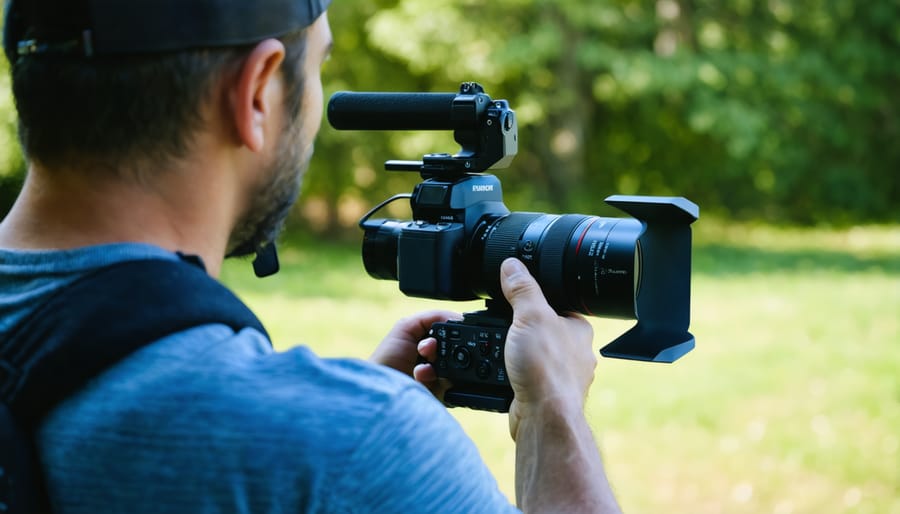
Extended Power Solutions
High-Capacity Battery Options
When it comes to extending your recording time, high-capacity battery options can be game-changers for videographers. Standard batteries typically offer 2-3 hours of continuous recording, but extended batteries can push that to 6-8 hours or more, depending on your camcorder model and usage patterns.
Many manufacturers offer official extended battery packs that seamlessly integrate with your camcorder. These typically range from 4000mAh to 8000mAh capacity, roughly doubling or tripling your recording time. While they add some bulk to your setup, the trade-off is worth it for longer shoots.
Third-party battery solutions can be even more cost-effective, often providing similar or greater capacity at a lower price point. However, it’s crucial to choose reputable brands that include safety features like overcharge protection and temperature control. Some popular options include V-mount batteries, which are particularly useful for professional setups and can power multiple devices simultaneously.
For maximum flexibility, consider a battery grip that accepts multiple standard batteries. This approach lets you hot-swap batteries without interrupting your recording, perfect for events or documentary work. Some videographers also opt for external power banks with DC output, providing an emergency backup solution that can extend recording time significantly.
Remember that higher-capacity batteries typically take longer to charge, so investing in multiple batteries and a quality multi-battery charger is wise for professional work. Also, consider that some extended batteries might affect your camcorder’s balance or require additional support when mounting on gimbals or stabilizers.
External Power Systems
When you need truly extended recording capabilities, external power systems offer the ultimate solution. V-mount batteries, originally developed for professional broadcast cameras, have become increasingly popular among serious videographers. These powerhouses typically provide 14.4V and capacities ranging from 95Wh to 190Wh, potentially giving you 8-12 hours of continuous recording time.
V-mount batteries aren’t just about longevity – they’re also incredibly versatile. Many models feature D-tap ports, allowing you to power additional accessories like LED lights or monitors simultaneously. While they add some weight to your setup, the trade-off in runtime makes them worthwhile for long events or remote shoots where power access is limited.
For studio work or controlled environments, AC adapters remain the gold standard for unlimited recording time. Modern AC adapters often come with sophisticated power management features that protect your camcorder from voltage fluctuations. Look for models with locking connectors to prevent accidental disconnections during critical shoots.
When choosing between V-mount batteries and AC adapters, consider your shooting environment and needs. V-mounts excel in mobile situations and offer backup power security, while AC adapters are perfect for controlled settings where constant power is available. Many professionals maintain both options in their kit for maximum flexibility.
Remember that most camcorders require specific battery plates or power adapters to use V-mount batteries. It’s worth investing in quality mounting solutions to ensure secure connections and proper power distribution to your camera.
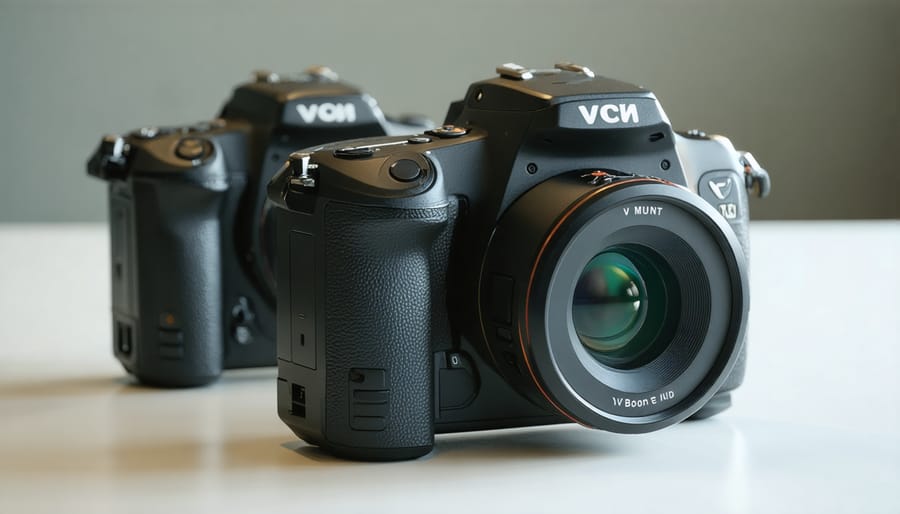
Portable Power Banks and USB Solutions
The rise of USB-powered solutions has revolutionized how we keep our camcorders running during extended shooting sessions. Modern power banks have become a game-changer for videographers, offering a portable and reliable power source that can significantly extend recording time.
Today’s power banks come in various capacities, typically ranging from 10,000mAh to 26,800mAh, with the latter capable of charging a camcorder multiple times. When selecting a power bank for your camcorder, look for one with Power Delivery (PD) technology and appropriate voltage output matching your device’s requirements. Most contemporary camcorders accept 5V/2A or 9V/2A input, making them compatible with standard USB power delivery systems.
One of the most practical advantages of using power banks is their versatility. The same unit that powers your camcorder can also charge your smartphone, LED lights, or other USB-powered accessories in your kit. For professional videographers, investing in multiple high-capacity power banks is often more cost-effective than purchasing additional proprietary battery packs.
Many modern camcorders now feature USB-C ports, which allow for faster charging and even continuous operation while connected to an external power source. This setup is particularly useful for lengthy indoor shoots, interviews, or event coverage where you can keep the power bank nearby.
To maximize the effectiveness of portable power solutions:
– Choose power banks with multiple output ports for simultaneous charging
– Look for models with pass-through charging capability
– Consider power banks with LCD displays showing remaining capacity
– Opt for reputable brands with safety certifications
– Keep multiple banks charged and ready for backup
Remember that while USB power solutions offer great flexibility, they should complement rather than replace your primary batteries. Having both options available ensures you’re prepared for any shooting situation, whether you’re filming in a controlled environment or out in the field.
Battery Maintenance and Storage
Proper battery maintenance and storage are crucial aspects of essential gear maintenance, particularly for ensuring the longevity of your camcorder’s power system. To maximize your battery’s lifespan, store it at approximately 40% charge rather than fully charged or completely depleted. This sweet spot helps prevent chemical degradation within the battery cells.
Temperature plays a vital role in battery health. Store your batteries in a cool, dry place between 59-77°F (15-25°C). Avoid leaving them in hot cars or exposed to direct sunlight, as extreme temperatures can permanently damage the cells. Similarly, freezing temperatures can reduce battery capacity and performance.
When storing batteries for extended periods, perform a maintenance cycle every three months. This involves charging the battery to about 40%, using it briefly, then returning it to storage. This practice helps maintain the battery’s chemical stability and prevents capacity loss due to prolonged inactivity.
Keep battery contacts clean using isopropyl alcohol and a cotton swab. Dirty contacts can cause poor connections and reduced power delivery. When traveling, use dedicated battery cases to protect the contacts from shorts and physical damage.
For professional shoots, implement a rotation system for your batteries. Label them with numbers or dates to track usage and aging. This helps identify batteries that might be losing capacity and ensures even wear across your collection. Consider retiring batteries that show significant capacity loss or physical swelling, as these could potentially damage your equipment.
Remember to use only manufacturer-approved chargers and avoid third-party alternatives that might not properly regulate charging cycles. Quick chargers can be convenient but may reduce battery life over time. When possible, use standard chargers for routine charging to maximize battery longevity.
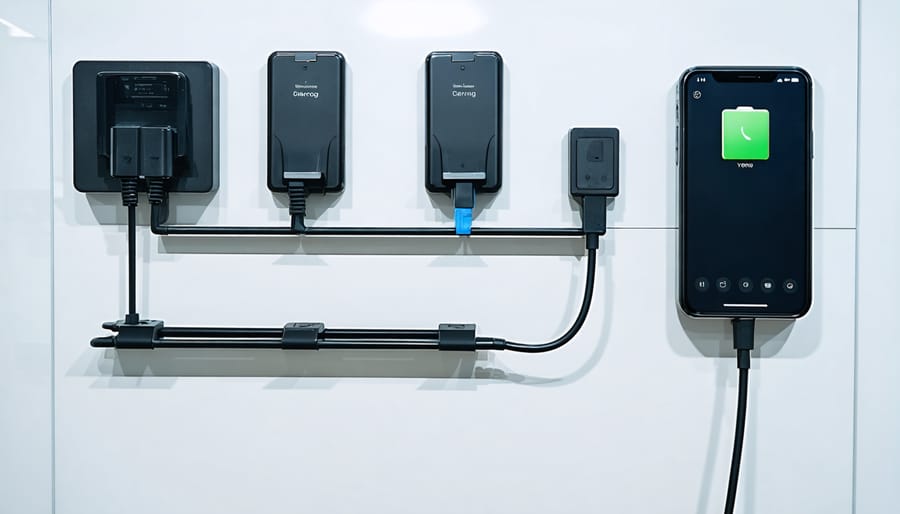
When choosing a long battery life camcorder, remember that battery capacity, power-saving features, and proper maintenance all play crucial roles in maximizing recording time. The best options typically offer at least 4-6 hours of continuous recording, with some professional models reaching up to 12 hours with extended batteries. Consider investing in spare batteries and external power solutions for extended shoots, and don’t forget to implement power-saving techniques like adjusting screen brightness and using standby mode wisely. Whether you’re a wedding videographer needing all-day reliability or a travel documentarian capturing adventures off the grid, today’s market offers numerous camcorders that can meet your extended battery life requirements. For the best results, choose a model that balances battery performance with your specific recording needs and budget constraints.





